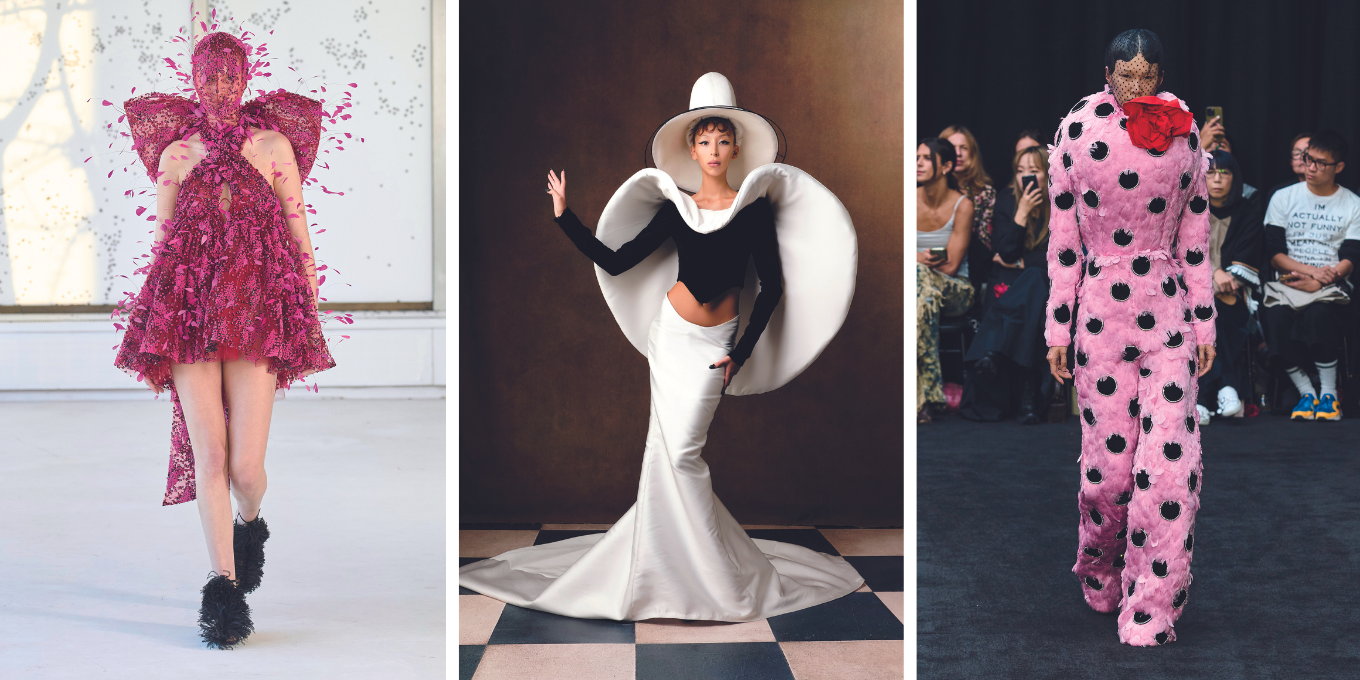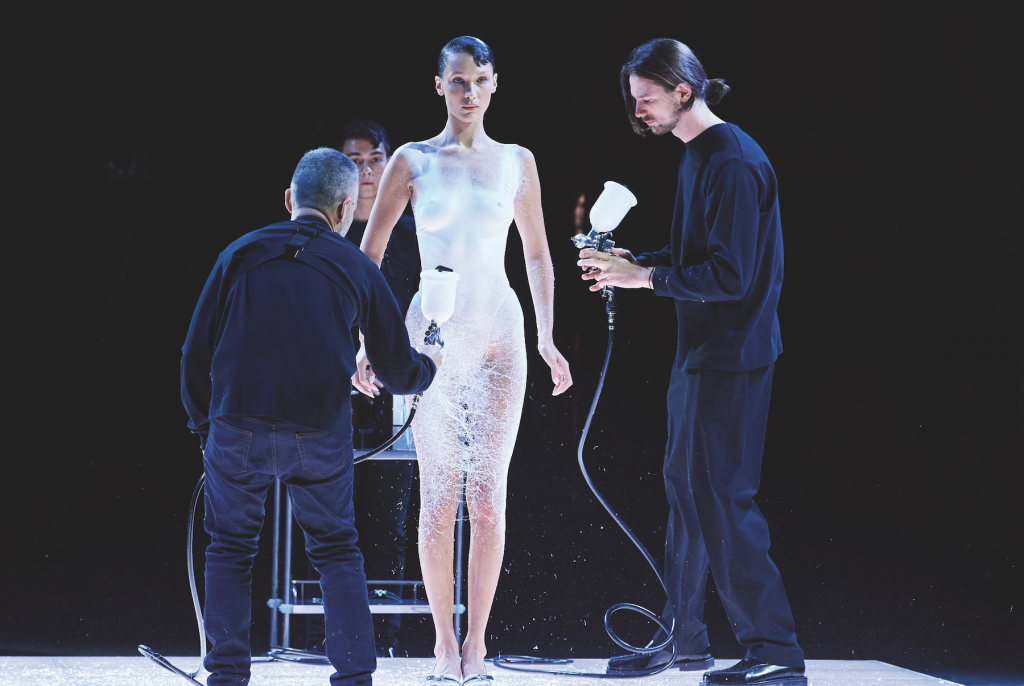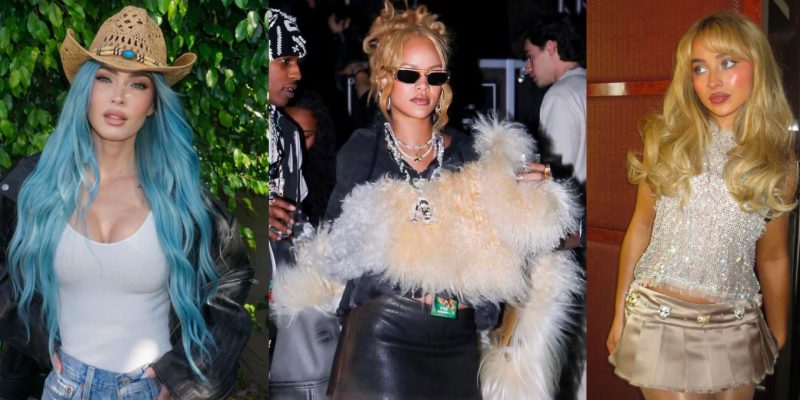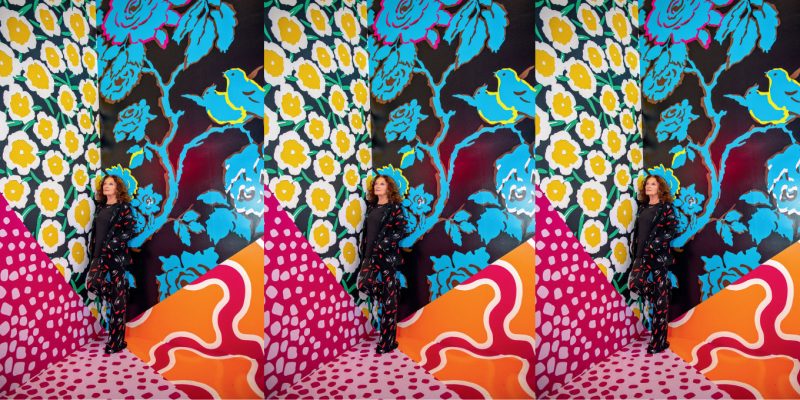Trends
Why the Fashion Industry Is Living for Shock Value
Stunt dressing is nothing new, but the recent rise of celebrities clamouring for the spotlight makes one wonder if it has gone too far.
by : Caitlin Agnew- Jun 1st, 2023

LAUNCHMETRICS SPOTLIGHT (Area, Harris Reed, Richard Quinn)
In the 1960s, Andy Warhol made a prescient statement: “In the future, everyone will be world-famous for 15 minutes.” He might as well have been talking about going viral. In an age when every influencer’s wet dream is to “break the internet”—like Kim Kardashian did in 2014 when she exposed her infamous derrière on the cover of Paper Magazine—what better way to capture attention in today’s visual culture than with extreme clothing? Enter stunt dressing, the art of styling an outlandish ensemble with the intention of getting tongues wagging and fingers tagging.
The original meaning of the word “stunt” involved elements of danger and entertainment. The 20th century saw the rise of the publicity stunt—a spectacular event held specifically to draw media attention. In today’s crowded social playing field, it often takes doing something radical to get noticed. Stunt dressing is one of many ways to insert yourself into the conversation.
“Whatever happened, we’ve completely eradicated any barriers to being a try-hard. Things have gotten so performative, and no one’s embarrassed about anything anymore. We’re so post-punk now.”
It’s nothing new in Hollywood, where celebrities have long accentuated their outsize personalities with equally outré ensembles. Take Cher, who wore a towering black Bob Mackie headdress and belly-baring dress—which the designer referred to as a “crazy getup for attention”—to the Oscars in 1986, or Lil’ Kim’s 1999 legendary purple pastie jumpsuit by stylist Misa Hylton. Madonna’s Jean Paul Gaultier cone bra defined her Blond Ambition era, while Lady Gaga has made a personal brand of stunt dressing, from donning a dress made of meat for the MTV Video Music Awards to arriving at the Grammys in a Hussein Chalayan-designed egg.
On runways, designers have been creating bigger and bolder shows in an effort to capture our eyeballs via our screens since the year 2000, when Condé Nast introduced Style.com, a website that gave fashion lovers around the world instant access to the latest collections. They continued to up the ante on the spring/ summer 2023 runways: Simon Porte Jacquemus, who has a history of playing with proportion to Instagram-worthy effect, included some preposterously large raffia hats, while Jonathan Anderson’s hyperreal pigeon bag bordered on Dadaism. Gucci doubled down on impact by sending twins in matching looks down the runway, while Richard Quinn created a dramatic fantasy complete with bubble-shaped feathered polka-dot catsuits. Not to be outdone by the catwalk, street-style-savvy attendees at the Schiaparelli haute couture show—including a red bejewelled Doja Cat and models and celebs sporting dresses with lifelike animal heads—took full advantage of the house’s link to the surrealist movement. But no one trumped the Coperni show, where designers Sébastien Meyer and Arnaud Vaillant painted a dress on a nearly nude Bella Hadid for their finale. A live-action event that delighted the show’s in-person audience, it became a viral moment that reportedly generated some $26 million in media-impact value. Made of a spray-on fabric consisting of natural and synthetic fibres, the dress was undeniably ethereal, but in later reviews, critics referred to it as nothing more than a gimmick.
“We live in a stunt reality,” says Ryan Emberley, a photographer who has been capturing the glitterati on red carpets and at events around the world for more than a decade. Emberley points to the 1990s dis of being a try-hard—a trait that today might be called “cheugy”—as having largely vanished from the collective consciousness. “Whatever happened, we’ve completely eradicated any barriers to being a try-hard. Things have gotten so performative, and no one’s embarrassed about anything anymore. We’re so post-punk now.”
Part of this cultural evolution is the fact that anyone with a phone can command attention from an audience. “You don’t need a journalist to announce you or affirm you or say how cool something is,” says Emberley. “You can be more absurd. It seems riskier, but it’s really not as risky.” Take viral sensation Julia Fox, who regularly communes with her virtual audience with advice on recreating her beauty and fashion looks, like her famous Fox eye and her DIY denim bra top. Recently, she shocked onlookers when she trotted out a realistic body bag by Canadian designer Mikhael Kale. Christine Quinn has used stunt dressing to take her fame level from reality star to style icon, replacing real-estate deals and drama on Selling Sunset with a globe-trotting life in statement looks by Versace, GCDS and Chet Lo and even landing a Marc Jacobs campaign.
Liberia-born, Toronto-based content creator Mirian Njoh says it’s important to first establish a definition of stunt dressing to decide where an outfit should land. “I think there is an element of theatre that is beyond personal style and an element of production,” she says, adding that true stunt dressing typically involves creative collaboration between the wearer and a team of trusted professionals, like a stylist and makeup artist. “It is something that is beyond what they could do on their own and is like performance art at that point.”
 Launchmetrics Spotlight (Coperni)
Launchmetrics Spotlight (Coperni) As a form of creative expression, one that requires a high level of skill, talent, dedication and teamwork, an over-the-top getup can spark joy. Take Bianca Jagger, who famously perched atop a white horse at Studio 54 during a birthday party thrown for her by Halston, or Céline Dion, whose cultural renaissance courtesy of stylist Law Roach radiated happiness. Its impact can be wide-reaching: NBA player Dennis Rodman’s iconic animal prints and dresses paved the way for Kyle Kuzma’s high-fashion Raf Simons and Rick Owens getups, and Jennifer Lopez’s famous Versace dress inspired Google to create its image-search function back in 2000. And it’s something anyone can try, even without access to a top-tier styling team, perhaps starting with something like dopamine dressing—brightly coloured outfits that trigger the release of this happy neurotransmitter.
Where stunt dressing goes wrong, however, is when it comes across as inauthentic. “Obviously, we don’t want to cross over the point when it starts to get cringey,” says Njoh. “That’s when I [consider] the authenticity of it. Do I think this person would authentically do this? If I don’t believe it and it’s just giving clickbait, then, no, it seems like a blatant grab for attention.” In short: Try hard, but make sure to keep it real.
Read more:
What Is Quiet Luxury? A Look at the Breakout Fashion Trend
Is Everyone a Fashion Critic?
Optical Illusions Are Fashion’s Latest Trend
Newsletter
Join our mailing list for the latest and biggest in fashion trends, beauty, culture and celebrity.
More from Trends
Read Next

VIP
9 Stylish Icelandic Adventures Tailored to Fashion-Conscious Canadians
Iceland’s stylish escapades for the fashion-forward Canadian traveller blend elegance with adventure.
by : Contributor Content- Apr 15th, 2024

Fashion
The Best-Dressed Stars at Coachella Weekend One
Here's what your favourite celebs (and influencers!) wore to kick off Coachella's first weekend.
by : Lauren Knowles- Apr 15th, 2024

Culture
ELLE Adventures to Georgia
Immerse yourself in the heart and soul of the Peach State with this comprehensive guide to all the top spots.
by : ELLE UK- Apr 3rd, 2024




